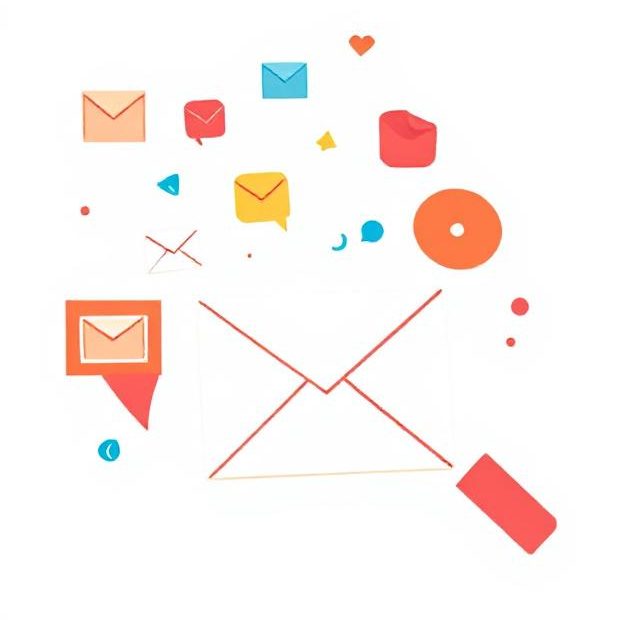Email marketing remains one of the most powerful tools for connecting with your audience, but what happens when your list goes cold? Maybe you haven’t emailed your subscribers in months, or perhaps you imported a list of leads you haven’t contacted in a while. Before hitting “send,” it’s crucial to warm up a cold email list safely to protect your sender reputation and improve deliverability.
In this post, we’ll walk you through a step-by-step process for warming up cold email lists, how to avoid common mistakes, and how to ensure your emails land in the inbox—not the spam folder.
What Is a Cold Email List?
A cold email list refers to a group of email contacts who haven’t heard from you in a long time (typically 60–90+ days) or who have never interacted with your brand via email before. This includes:
-
Old customer lists
-
Purchased or scraped email lists (not recommended)
-
Inactive subscribers
-
Leads collected from past campaigns or events
Sending mass emails to a cold list without preparation can cause serious damage, including:
-
Low open rates
-
High bounce rates
-
Spam complaints
-
Domain blacklisting
That’s why it’s vital to warm up your cold email list safely and gradually.
Why Warming Up a Cold List Is Important
Email service providers (ESPs) like Gmail, Outlook, and Yahoo use algorithms to determine whether your emails are trustworthy. If they see high bounce rates or low engagement, your emails may be marked as spam or blocked entirely.
By warming up your list properly, you:
-
Build trust with ESPs
-
Increase email deliverability
-
Re-engage inactive users
-
Maintain or improve your sender reputation
A good warm-up strategy helps revive your list while keeping your domain safe from damage.
Step-by-Step: How to Warm Up a Cold Email List Safely
Let’s go through the essential steps to warm up your list without triggering spam filters.
✅ 1. Clean Your Email List First
Start by verifying your list with a list-cleaning tool like:
-
ZeroBounce
-
NeverBounce
-
BriteVerify
Remove:
-
Invalid or fake email addresses
-
Hard bounces
-
Role-based emails (like support@, sales@)
-
Unengaged subscribers from past campaigns
A clean list is essential to avoid bounce rates that hurt your domain’s reputation.
✅ 2. Segment Your List
Don’t email the entire cold list at once. Instead, divide your list into smaller segments based on:
-
Last engagement date
-
Sign-up source
-
Past purchase behavior
-
Interests or demographics
Start with users who are more likely to remember you or engage again, and work your way to colder contacts.
✅ 3. Use a Warming Sequence
Send a series of light, value-driven emails over time. Your goal is to reintroduce yourself and invite engagement—not to sell immediately.
Email 1: Reintroduce your brand
-
Subject: “Hey, it’s been a while!”
-
Content: A warm hello, brief update, and ask if they still want to hear from you
Email 2: Offer value
-
A freebie, resource, or helpful article
-
Ask a simple question (to increase replies and engagement)
Email 3: Include a strong but respectful call-to-action
-
Invite them to check out a new offer, blog post, or webinar
-
Include an easy way to unsubscribe or update preferences
Spacing each email 2–5 days apart helps avoid overwhelming the recipient.
✅ 4. Warm Up Your Sending Domain
If it’s been months since you last sent emails, your domain may be “cold” too. Use warming tools like:
-
Mailwarm
-
Lemwarm
-
Warmbox
These services simulate real interactions with your emails—opens, replies, etc.—to gradually build your domain reputation before you launch your full campaign.
✅ 5. Track Engagement Closely
Pay close attention to your email metrics:
-
Open rate (aim for 20%+)
-
Click-through rate
-
Bounce rate (should be <2%)
-
Spam complaints
If you notice high bounces or complaints, slow down your sending or pause and reevaluate. Engagement is the key signal ESPs use to judge your reputation.
✅ 6. Optimize for Deliverability
To warm up your cold email list safely, you also need to follow deliverability best practices:
-
Authenticate your domain using SPF, DKIM, and DMARC
-
Use a professional email address (not free Gmail or Yahoo accounts)
-
Personalize your subject lines and content
-
Avoid spammy language (like “Buy Now,” “Free Money,” or all caps)
-
Keep your design clean and mobile-friendly
-
Always include a visible unsubscribe link
✅ 7. Re-permission If Necessary
For older contacts, especially those you haven’t contacted in over 6–12 months, it’s wise to ask for permission again.
A simple re-permission email might say:
“We’d love to keep in touch. If you’d still like to receive emails from us, click here to confirm.”
This proactive approach helps you stay compliant with privacy laws and protect your reputation.
What to Avoid When Warming Up a Cold List
-
❌ Never buy email lists—these are high-risk and often illegal
-
❌ Don’t send high-frequency emails to cold leads
-
❌ Avoid image-only emails that look like spam
-
❌ Don’t hide your identity—use recognizable branding and sender names
-
❌ Never use misleading subject lines
Following ethical practices is essential for long-term success.
Final Thoughts
Warming up a cold email list may seem like extra work, but the rewards are well worth it. When done correctly, it allows you to rebuild trust with your subscribers, boost engagement, and maximize the ROI of your email marketing campaigns—without risking your sender reputation.
Remember, the key is to warm up a cold email list safely by gradually re-engaging your contacts with clean data, valuable content, and a clear purpose. Start small, monitor results, and scale your efforts over time.
Also, you can learn more about Retargeting via Email here.
